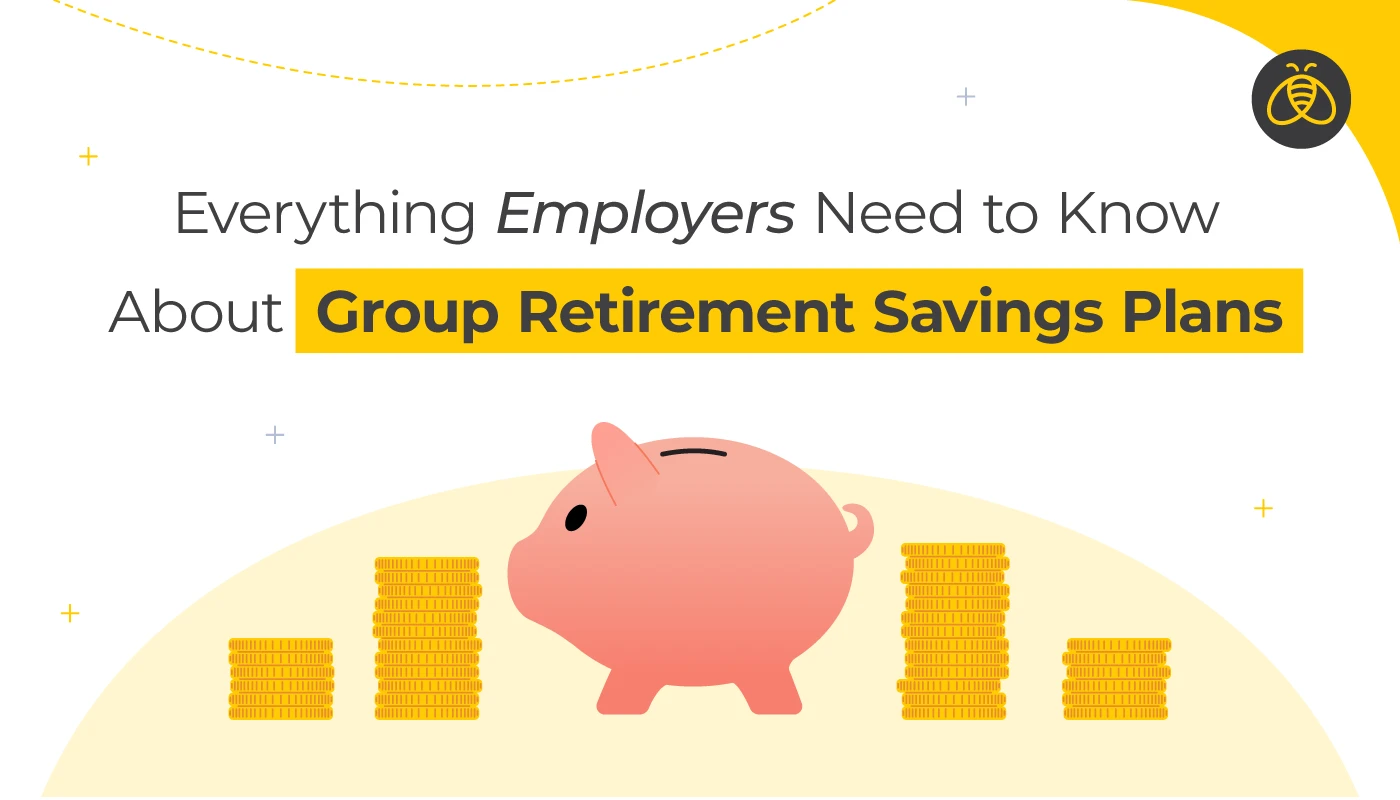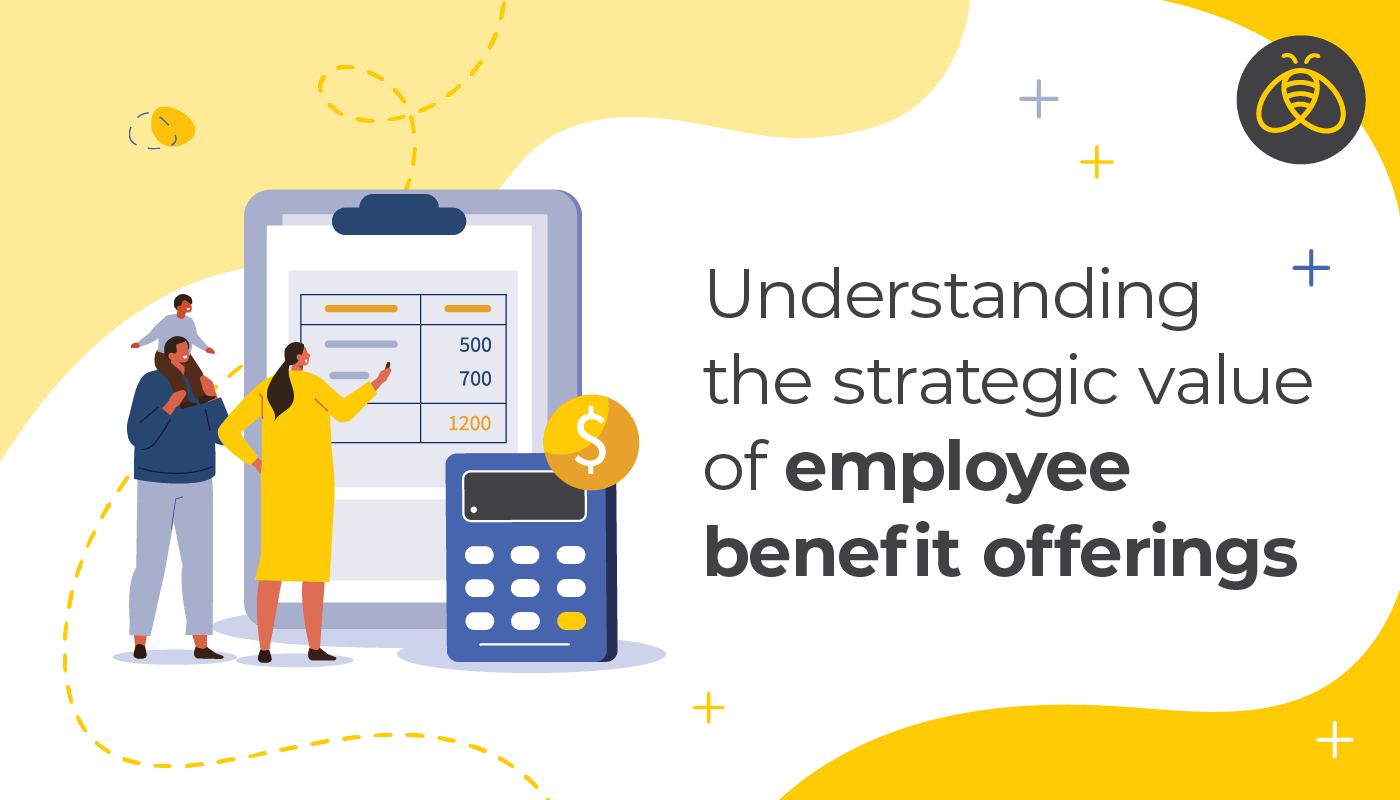Group retirement savings plans (GRSP)s are recognized by top employers as a valuable tool for employee recruitment and retention. Likewise, more and more working Canadians are considering GRSPs and other group retirement solutions when job prospecting.
Employers unfamiliar with this form of compensation will be at a disadvantage when it comes to attracting and retaining valuable talent. Stick with us as we cover the various plan types, how they are used, and which plan type might be the best for you and your employees.
Why offer Group Retirement Plans to employees?
Current and prospective employees look more favourably on companies that include group retirement solutions in their total compensation package.
Retirement is a growing concern for Canadians
More than half of Canadians (70%) think they won’t have enough saved to retire. Even those who are actively saving are finding it more challenging amid rising inflation. This can lead to a significant strain on their mental health, further affecting their productivity and happiness at work. Employers offering group retirement solutions can help to ease these burdens and better protect their workforce.
1. Protect employees’ financial health, wealth, and happiness
Financial health is one of the four pillars of holistic health that we consider at Benefits by Design (BBD). Financial problems are one of the most common stressors for Canadians. Employers with an emphasis on financial health and wellbeing will see greater satisfaction and retention among employees.
2. Attract and retain talent
A majority of Canadians would take a job with good benefits over one that pays more but offers no benefits. Group retirement solutions are just one of the ways employers can stand out and attract and retain employees! Coupled with Canadians’ growing concerns around retirement and inflation, this is becoming increasingly important.
3. Leveraging the “group” in group retirement
Group retirement plans leverage bulk purchasing power, resulting in lower fees for investments compared to individual programs. This provides more efficient savings for members at retirement when compared to individual programs. Additionally, with automatic payroll deductions, these plans act as a forced savings vehicle, better securing employees’ retirement funds. They also provide efficient tax relief, as tax is calculated after contributions have been made.
4. Employee engagement and satisfaction
Employees participating in these types of company-sponsored retirement plans feel more involved and connected, are happier in their workplace, and more productive at work because they feel like they’re being taken care of.
Why You Should Offer a Group Retirement Solutions (GRS) in Your Employee Benefits Plan
Types of Group Retirement Solutions
When it comes to group retirement solutions (GRS)s, employers have many options! Determining the right one for your business and employees, however, can be challenging. Let’s take a look at some of the most common examples.
Pension plans
Pension plans are a common group retirement solution, particularly for larger organizations or within government and union sectors.
Defined Benefit Pension Plans (DB) — an employer pays into a pool of money, which is invested, and retired employees are paid an amount based on a formula from that pool.
Defined Contribution Pension Plan (DCPP) — a DCPP defines the amount of money going into the plan member’s account typically based on a percentage of income. The plan member is responsible for making the investment selection on the contributions which will determine how those contributions grow until retirement. Unlike a DB plan, there is no set retiree pay-out amount with a DCPP. When they retire, the employee decides how often and how much of that accumulated amount is used as their retirement income.
*On rare occasions for DCPPs and DPSPs, there is the option for the employer to pre-select how the employer contributions will be invested.
Common non-pension plans intended for retirement savings
There are many other retirement solutions beyond pension plans. Some of the most frequently seen include:
Group Registered Retirement Savings Plan (RRSP) — a group RRSP is very much like an individual RRSP that employees are likely already familiar with. However, a group RRSP has several additional benefits. For example, contributions are deducted from an employee’s paycheque before the tax is calculated, reducing the amount of taxable income each pay period. Members can also make lump sum contributions to their group RRSP.
Deferred Profit-Sharing Plan (DPSP) — with a DPSP, only the employer makes contributions, with the employee choosing how to invest the funds*. Because the employee cannot make contributions to the DPSP, DPSPs are typically paired with an RRSP where the employee makes their contributions as well. DPSPs can have a vesting period of up to two years, meaning that, if an employee leaves the organization before vesting, the contributions made in their name are returned to the employer. This is contrary to a RRSP, where employer contributions are vested immediately.
*The employer can halt contributions in years that are not profitable.
Common non-pension plans intended for general savings or retirement:
There are other group savings plan options that can be used for other purposes on top of retirement saving. They can provide some additional flexibility in an employer’s total compensation when it comes to financial wellness!
Group Tax Free Savings Account (TFSA) — in a group TFSA, members enjoy tax-deferred investment gains and tax-free withdrawals. Though a group TFSA can be used for retirement savings, it does not have to be! Members use their TFSAs for short, medium, and long-term investment goals, with contributions taken regularly from the members’ pay after tax, or from lump-sum contributions.
Non-registered savings plan (NRSP) — like a TFSA, these savings can be used for short, medium, or long-term savings, and contributions are not tax-deductible. In an NRSP, investment returns are not tax-sheltered, but no tax is deducted upon withdrawal. These are often used by plan members who are likely to contribute more than their registered plan annual limit, but would still be receiving the employer contributions after that limit is reached.
Interested in learning more?
Group retirement solutions are an excellent method of providing a greater total compensation package to your employees. Attract and retain top talent, protect employees’ financial health, and help address Canadians’ growing financial concerns about retirement and inflation.
You can learn more about group retirement solutions from your BBD or People Corporation representative.



